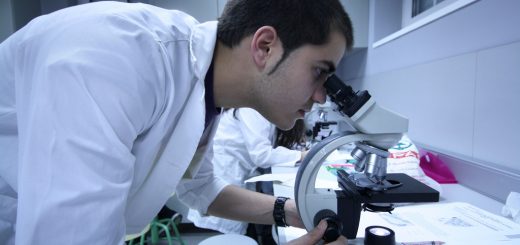Lithium – from batteries to synthetic-Knex

Lithium is one of the most important metals to our society. It finds vital use in medicines like antidepressants and technology such as rechargeable batteries. Batteries are the backbone of our drive towards the adoption of electric vehicles. Similarly, our phones, laptops, watches, pacemakers and, rather worryingly, disposable electronic cigarettes, all rely on lithium.
There has been a growing campaign to ban the use of lithium-ion batteries in single-use e-cigarettes. Lithium is a finite resource and its extraction from the earth causes vast environmental damage. This damage could be offset somewhat by the reduction in carbon dioxide emissions from the switch to electric vehicles, but when we squander such a precious resource with gay abandon, we do so at our peril.
As a synthetic chemist, I’ve come to have something of a soft spot for lithium. Organo-lithium compounds are incredibly useful to synthetic chemists. When making new organic molecules (compounds made mostly from carbon atoms), such as the materials used for digital displays, we take separate molecules with certain properties and couple (bond) them together. To achieve this, organo-lithium compounds (usually n-butyl lithium or tert-butyl lithium) remove hydrogen atoms from carbon-based molecules, replacing them with lithium, forming a new, highly reactive organo-lithium salt. This new lithium salt can then couple with a second molecule (such as those containing bromine atoms) to produce useful molecules. The process is a bit like building with Lego, but perhaps more accurately described as a bit like KNex (other children’s building toys are available).
Both butyl-lithium molecules are violently reactive and must be stored under inert atmosphere in the lab. n-BuLi fumes, upon exposure to air, and will set paper, or one’s trousers alight upon contact (a property I have experienced to my detriment). t-BuLi, on the other hand, is much scarier. Upon exposure to air, it spontaneously ignites. When transferring from the bottle to the reaction vessel via a syringe, the needle tip carries a purple flame, which has caught many an inexperienced chemist off-guard, to rather combustible consequences.
Synthetic chemists make new materials to revolutionise the efficiency of electronic technology — reducing the energy required to run it, reducing the pollutants released from its disposal, and increasing variety in device design and uses. They will also provide the next generation of battery technology, eradicating our reliance upon the lithium-ion battery. Lithium is incredibly useful, both for consumers and in the lab. With wasteful use of this element now a real problem in society, the thought of this simple element becoming unavailable is frankly a horrifying prospect.







